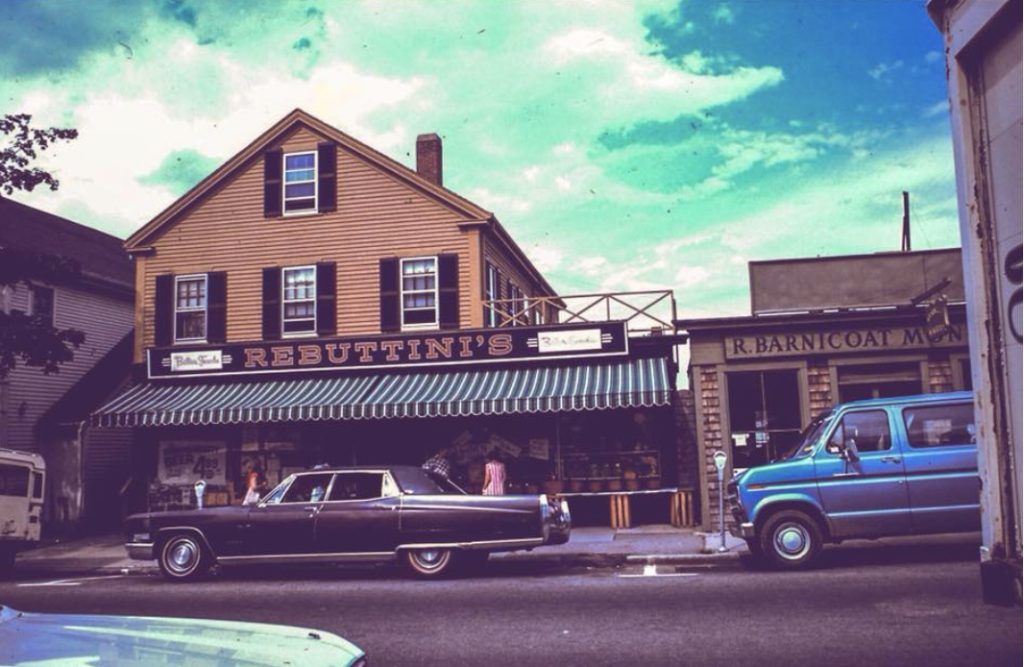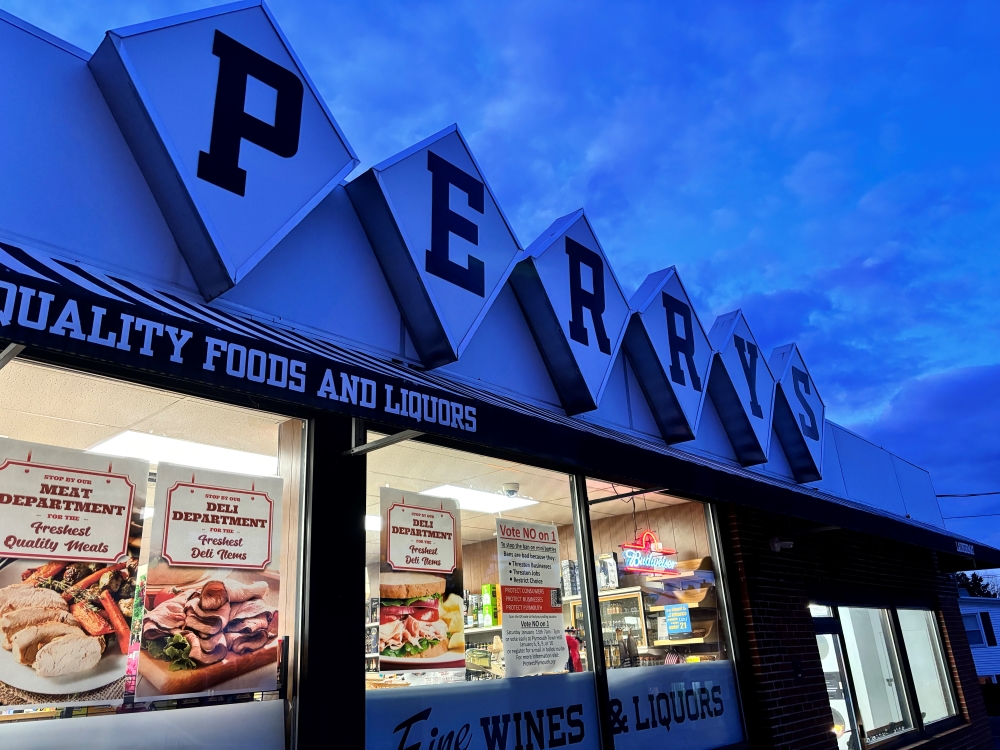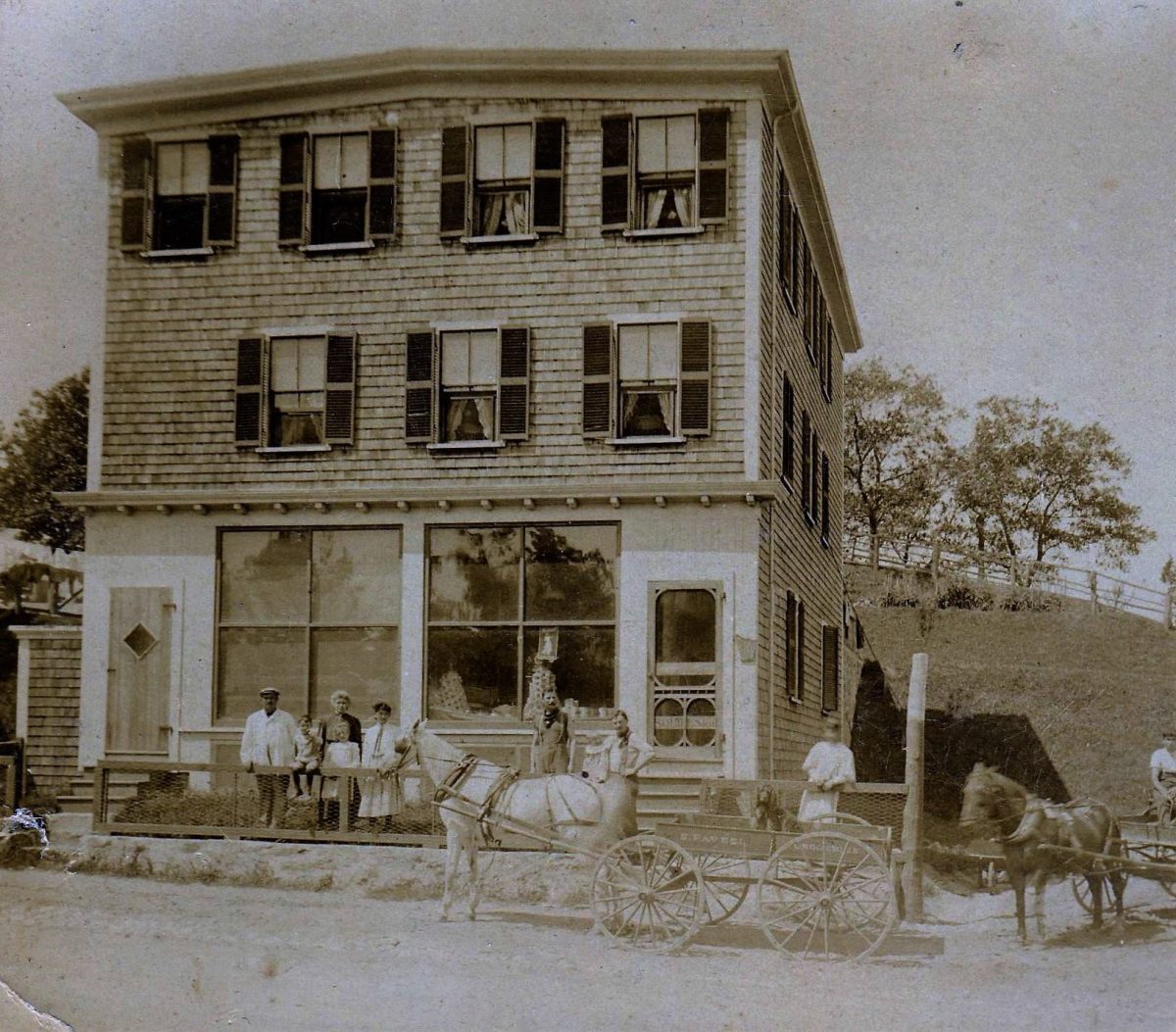With the recent snowfall of Jan. 7, no doubt many of you cried out: “We need to go to the store for bread and milk!” Really, have we become so afraid that we might starve if we go two days without bread and milk?
Absurd as it may be, it got me thinking about where we shop for food. Plymouth is blessed to have numerous grocery stores and many specialty shops but it wasn’t always that way. Our history of food supply is as old as the Pilgrims and includes a sad tale of the theft of Native corn stores on the Cape, a theft only repaid during negotiations between the Pilgrims and the local Indigenous People.
My story here, however, begins with the arrival of the Pavesi branch of my family in 1892. Unlike a majority of the Italians who arrived to work at the Plymouth Cordage Company, the Pavesis came with the intent of opening a grocery store.
In a bit of history unfamiliar to most Plymouth residents, a second Italian neighborhood existed on Water Street and the surrounding streets of Union, Emerald, Water Cure and the bottom of Leyden Street. The Pavesi’s first grocery store was in that neighborhood and remained there until 1900 when the family relocated to North Plymouth. A short 15 years later the Water Street neighborhood residents were evicted and relocated as plans for the Tercentennial celebrations began land clearing for the parks that exist today.
The Pavesi store eventually settled on Cherry Street, one of many Italian stores that occupied North Plymouth neighborhoods and the downtown core early in the 20th century. They were part of a tradition that would last through my early childhood.
I was so lucky to grow up tagging along with my mother on a Saturday morning as she did her grocery shopping. My mom had a set pattern in her repertoire. Stop one was Canevassi’s on Court Street in North Plymouth. Mom shopped here for fruits and vegetables. I still remember the baskets on the wood floor full of produce. Stop two brought us to one of the last vestiges of the Italian neighborhood on Water Street: Cappanaris’ (Water Street Cafe now), her go to for meat. The last stop was Victoria’s Market on Standish Avenue. (Shiretown Glass now.) Canned goods and sundries rounded out this stop. The Victoria family were our neighbors and if “Uncle” Manny or “Auntie” Margaret were in the store I was guaranteed a Coke over my mother’s protests that I would never finish it. (I never did!)

There were so many others throughout town: Benotti’s and Broccoli’s, Holmes on Sandwich Street, Perry’s Market on Standish, Coopers/Barberi’s at Jabez Corner, and, of course, Rebuttini’s downtown. The winds of change first blew into town in the 1940s with the construction of a First Nation chain grocery store in the center of Plymouth. Many mom-and-pop stores survived through the 1960s but the writing was on the wall. Rebuttinis managed to hang on until the ‘80s and, thankfully, Perry’s is still alive and going strong.
The closing of the Cordage Company, the retirement of aging owners, and the lure of large fancy chain supermarkets with lower prices all contributed to the slow death of most small grocery stores in Plymouth.
By the end of the 1960s my mom’s routine had changed as well. Grocery shopping switched to Friday nights. The new First National at what was long known as Benny’s Plaza was stop one. It was the days of Green Stamps and being thoroughly annoyed we might miss “The Brady Bunch” on TV.
Stop two landed us at Tedeschi’s brand new store on the Plymouth/Kingston line. Tedeschi’s carried some Italian products that were still staples in our household, including the Pastene line. It also meant annoying my parents to no end playing “guess what town I’m in” as the town line between Plymouth and Kingston was clearly delineated on the floor of the store. Other chain stores began to arrive in Plymouth with much bigger footprints and products that the smaller stores didn’t carry. They included the IGA downtown and an A&P on Park Avenue.

No longer required to tag along, I was blissfully unaware of where my parents shopped through my high school years. I know that Saturday afternoons still meant sliced meat, horn bread, and gnocchi bread, which I suspect might have come from Tedeschi’s (later to become a Stop & Shop), Clyde’s, or possibly the new Purity Supreme at the new Myles Standish Plaza on Samoset. It became a further mystery when I left for college.
As the 1980s came to a close, the face of Plymouth was changing further. The opening of Independence Mall in Kingston was received with such fanfare, but it spelled the slow death of many beloved institutions in Plymouth and the rise of the corporate face of commerce in Plymouth. Stop & Shop had become a major grocery chain, only to be challenged by the arrival of Shaw’s, Star Market, Angelo’s and finally a Walmart. These stores were big and were about to get bigger. When the Super Stop & Shop opened in Kingston, I became a patron along with – gasp – my parents.
Today some of the names have changed, but as in the rest of America, large corporations dominate the food market in Plymouth. But isn’t it fascinating that what was old is new again?
Sure, we routinely go to a chain market on Tuesday nights, but I now find myself, like my mother before me, making the rounds on Saturday morning. Hearth Bakery for bread, Wood’s for fresh seafood, Bramhall’s for coffee milk, PGS for specialty cheeses, Skippy’s for Gnocchi bread, Perry’s or Piantedosi’s for meat, and the Plymouth Farmers market during the season for fresh produce. These are just a few of my Saturday rounds, and like me as a child, my husband is known to ask all too soon, “Are we done yet?”
Happy shopping, folks!
Architect Bill Fornaciari, a lifelong resident of Plymouth, is the owner of BF Architects in Plymouth. His firm specializes in residential work and historic preservation. Have a question or idea for this column? Email Bill at billfornaciari@gmail.com.

